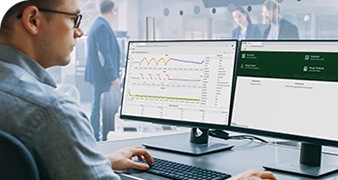Semiconductor Test Courses
Learning paths for semiconductor test engineers
These learning paths are for semiconductor test engineers working with NI software and solutions from the lab to the production floor. Explore best practices to accelerate product development and enable smart analytics in and beyond the lab. And then develop and debug configuration-based test programs, create custom measurements, and optimize advanced test programs for mixed-signal and RF devices using the NI Semiconductor Test System (STS).
Semiconductor Production Test learning path
Semiconductor Production Test is often challenged to test more complex parts within a fraction of the time and budget. This path is meant for operators, technicians, and test engineers working with the NI Semiconductor Test System (STS).
STS Operator and Technician Courses | Description | Recommended Prerequisites |
|
| Learn the structure and components of the STS along with safety and environmental requirements to operate the STS in a production environment. |
|
|
| Set up, troubleshoot, and maintain the NI Semiconductor Test System (STS) |
|
The STS Test Engineer Curriculum teaches semiconductor production test engineers quickly how to develop and debug configuration-based test programs, create custom measurements, and optimize advanced test programs for mixed-signal and RF devices using the NI Semiconductor Test System (STS)
STS Test Engineer Courses | Description | Recommended Prerequisites |
Test Program Development with STS
| (On-demand only) Use the NI Semiconductor Test System (STS) to interactively create, modify, execute, and debug test programs with pre-existing code modules (developed using LabVIEW or .NET/C#) to collect test data and test time reports. |
|
Test Program Development with STS and .NET/C#
| (Instructor-led only) Use the NI Semiconductor Test System (STS) resources interactively to create, modify, execute, and debug test programs with pre-existing code modules developed in .NET/C# to collect test data and test time reports. |
|
(On-demand only) Use Semiconductor Test System (STS) resources to develop and debug measurement code modules for the STS test program, create custom test steps, and perform test program optimization and deployment. | Test Program Development with STS
| |
(Instructor-led course) Use Semiconductor Test System (STS) resources to develop and debug measurement code modules for the STS test program, create custom test steps, and perform test program optimization and deployment. This course is available for either LabVIEW or .NET/C#. | ||
For test engineers testing RF parts, use STS RF resources interactively to create, modify, execute, and debug test programs based on RF configurations. This course is available for .NET/C# only and should be taken after Test Program Development with STS and Test Code Module Development with STS. | ||
mmWave Test with STS (.NET/C#)
| For test engineers testing mmWave parts, learn about the components, functionality, and purpose of the mmWave subsystem. This course is available for .NET/C# only and should be taken after Test Program Development with STS and Test Code Module Development with STS. |
STS Test Engineer Courses | Description | Recommended Prerequisites |
Explore the LabVIEW environment, dataflow programming, and common LabVIEW development techniques in a hands-on format. | ||
Use TestStand to develop, analyze, debug, and deploy practical test applications that match your test needs. | ||
Design and architect test system frameworks, learn advanced features, and customize the built-in functionality of TestStand. | ||
Leverage digital pattern instruments and the Digital Pattern Editor to perform common characterization and production tests, with a focus on DUT communication, digital interface testing, and continuity and leakage testing. |
Semiconductor Validation Test learning path
This path is for Semiconductor Validation Test Engineers trying to characterize devices and reduce test time without sacrificing measurement quality and accuracy.
Continue Learning | Description | Recommended Prerequisites |
Measure the reliability of semiconductor wafers with the Wafer Level Reliability Test Software. |
| |
Use the RFIC Test Software to establish performance limits and define specifications for RF power amplifiers under test. |
| |
This course will help you to configure the add-on, wake-up, troubleshoot, interact with, and debug your device under test. |
| |
The VCSEL I-V Test Subsystem provides a customizable solution for testing vertical-cavity surface-emitting laser (VCSEL) devices. Integrate the VCSEL I-V Test Subsystem into their existing test systems and perform basic tests to ensure proper connectivity. |
|
Additional Semiconductor Course Options
Logging, Managing and Evaluating Product Compliance Data with Bench Data Connector
Use the SystemLink family of products to characterize a product and evaluate its compliance with its defined specifications. Explore data logs in the Bench Data Connector Browser and evaluate in Specification Compliance Manager.
Managing Product Compliance with Specification Compliance Manager
Use the Specification Compliance Manager (SCM) in SystemLink to evaluate a product’s compliance to its defined electrical specifications. Learn how to override compliance, set the criteria used for judging compliance, and use condition and parameter mapping functionality.
Upgrade to Membership
Planning to take three or more NI instructor-led courses within one year?
A Training Membership provides cost-effective, unlimited access to all NI public classroom and public virtual courses, along with unlimited certification vouchers.

